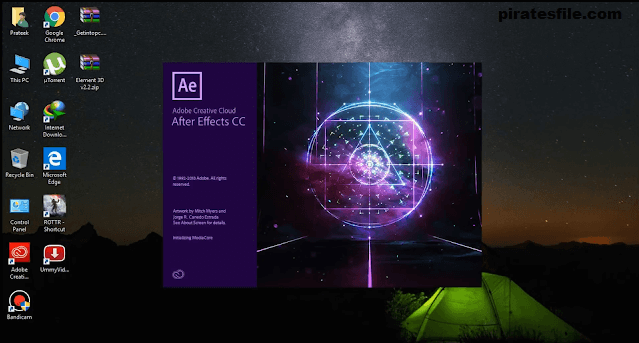
Okay, seriously now-why is that keyframe doing a little dance in the middle of the screen? All you want is for it to move smoothly from one side of the screen to the other, with a little pause in the middle, right? What’s up with with the wibble-wobble thing? (We know, that was a lot of “comps.”) Mistake #2: Wibbly-Wobbly Keyframes So while the pre-comp may be set to the proper length, if the layer turns off in the pre-comp, it will turn off in the main comp as well.
#Internet browser as element after effect full#
Sometimes, new users don’t realize that they need to set the layer to the full length of the comp, which can make the layer “disappear.” This is especially common when using pre-comps, because the behavior of a pre-comp inside of a comp will effect the main comp. You see, your AE timeline reads from left to right, and as you know each layer can be set to turn on or off anywhere in the timeline. Usually it’s just a rogue keyframe to blame-you may have accidentally set the size or opacity to zero, or-more likely-the layer endpoint is coming up before the end of the comp. If your layers keep disappearing, a few things could be at play. Mistake #1: The Case of the Disappearing Layers

#Internet browser as element after effect how to#
To help you avoid these pesky problems, we’ve compiled a list of the ten biggest and most common AE mistakes out there-and how to avoid them. You’re happily animating away, minding your own business, when suddenly-bam! You get hit with a weird error message, or your layer disappears…and why isn’t the mask tool working anyway? After Effects can be a complicated program, and while customizable After Effects templates and internet tutorials can help anyone get the ball rolling, there are still a few ins and outs that can elude even advanced animators and FX artists. when you control the hover state with jQuery.onMouseOver for example, only works (sometimes), the method One.We’ve all been there. Edited: screenshot added.Īnd finally and as I say at the begining, I only be able to do this if the hover is set with CSS:HOVER. If it's not clear at all, let me know and I can add a few screenshots. Two, to keep the hover effect even if the mouse is not over the HTML element, open the inspector, go to Styles TAB and click in the upper right icon that says Toggle Element State.(dotted rectangle with an arrow) There you can manually activate the Hover Event (among others) with the checkbox provided. then when you move the mouse over the inspector view, the hover effect keep activated in the document. Open the inspector in docked window and increase the width until reach your HTML element, then right click and the popup menu must be over the inspector zone. One, to see the hover effect when the mouse leave the hover area: If the hover effect is given with CSS then yes, I normally use two options to get this: Trigger the hover and wait for the debugger statement to execute. Open the JS console, and enter: // Pause script execution in 5 seconds In those cases, you can pause script execution by triggering a debugger statement while the hover is open: Some web pages attach keydown / keypress / keyup event listeners which interfere with the shortcut above.

Now you can move your mouse around, inspect the DOM, whatever.


Interact with the UI to get the element to appear. Note the shortcut to pause script execution- F8 (there may also be another depending on your OS). Open up Developer Tools and go to Sources. I'm sure Firefox has an equivalent procedure: You can pause script execution without losing the hover element as follows: 1. This is a much simpler way of freezing the DOM than the other answers suggest. If the hover element is triggered by JS (if triggered by CSS :hover, see gmo's answer), you can inspect it if you pause script execution.


 0 kommentar(er)
0 kommentar(er)
